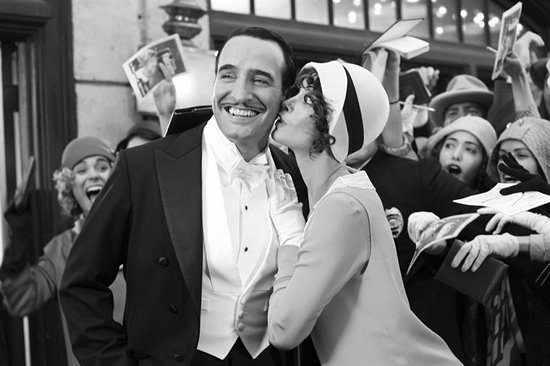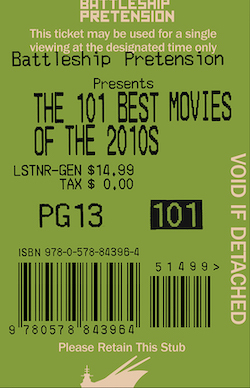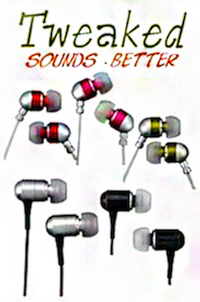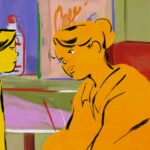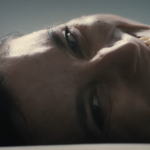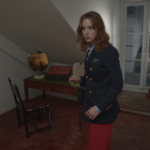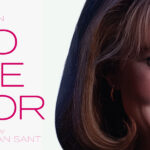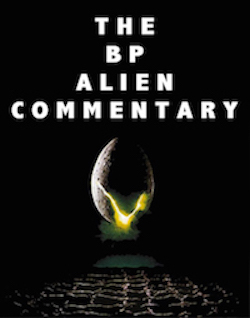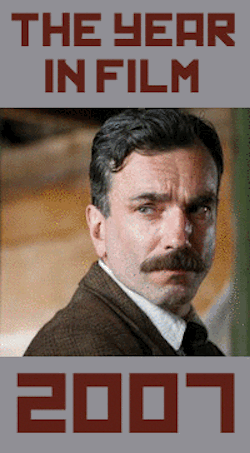That’s Entertainment! by Scott Nye
For hardcore cinephiles, it’d be very easy to misunderstand Michel Hazanavicius’ The Artist and hold it to a false standard. After all, a modern film made “in the silent style” (1.33:1 framing, black-and-white, no diegetic sound) is a pretty indulgent proposition, so surely we have to hold it to the standards of that era in terms of cutting, performance style, composition, etc. (never mind historical accuracy; always of prime importance in a piece of fiction). But right away The Artist makes clear that its intentions are not being of the era it’s representing, but a reflection about that era, both literally and metaphorically. Telling the story of a silent star whose career vanishes with the advent of sound, it’s already a film outside its own time – no one in 1931 or 1932 would make a silent film about the rise of sound (if indeed they would make a silent film at all). Add to that a few knowing modern touches, and it’s clear that The Artist is very much a 2011 film indulging in the past. That it’s still a very good film makes the indulgence all the sweeter.
When we meet George Valentin (Jean Dujardin), he’s on top of the world, ma. His new film is unfolding in front of a very receptive audience, and if his extended curtain call seems the product of an ego run wild, one has to acknowledge that the audience never gets enough of him, or his little dog, too (yes, for those who didn’t get enough of great Jack Russell Terrier performances after Mike Mills’ Beginners, Uggie might just do that pup one better). But how does he know when it’s time to bound onstage? His film ends, he puts his hand to his ear from backstage in anticipation of the applause, and then lets out a huge smile, overjoyed at the response he expected. And then Hazanavicius cuts to the audience applauding. This is not the way a silent director would communicate this (they’d cut first to the applause, then George’s reaction), but Hazanavicius’ shot structure is a knowing acknowledgement of a modern audience interacting with a silent picture for (largely) the first time.
He doesn’t draw too many jokes like this, but it’s nevertheless an important consideration. When The Artist was first announced as a player at the Cannes Film Festival, I assumed it would get a decent, but limited, distribution deal and remain sort of a niche interest. I was blown away when the Weinstein Company picked it up as a major Oscar contender to be released on Thanksgiving (in select markets, granted). Now millions of people will (perhaps inadvertently) be seeing a silent film for the first time. How does one address such an audience? Perhaps Hazanavicius was freed by not knowing his film’s fate, because the answer is largely “without reservation.” While even (or perhaps especially) those well-versed in silent film will be a little frustrated at several conversational scenes that contain no intertitles and little body movement, The Artist is a very approachable film that, like all the great silent films, you understand intuitively.
Right away, Hazanavicius understands the most important element of silent filmmaking – the need to be expressive. As much as Dujardin has been getting a lot of much-deserved accolades (and he really plays an incredible range between buoyant comedy and absolute despair), however, it’s his costar, Bérénice Bejo, who really steals the show. As Peppy Miller, an up-and-comer who is part of the new wave of talkie performers putting George out of a job, her performance is breathtaking. Her careless abandon as a performer is helplessly winning in her early scenes, and in her one opportunity to unleash some silent comedy chops, she knocks it out of the park.
The film has come under fire in some arenas for the classic “all style, no substance” argument. Leaving aside the fact that any film with a distinguished style takes on tremendous substance, I can’t believe we’ve watched the same film. There is a single shot near the end of The Artist that’s as filled with despair as any I’ve seen all year (well…The Turin Horse aside), and enough expressions of pure joy to last a lifetime. Some, perhaps, could argue that it does little more than express the joy of the movies, but…why not? In the silent and especially the early sound era, one could rely on a regular dose of movies (typically a Busby Berkley musical, but there were certainly others) that were genuinely celebratory, and just so filled with the joy of simply living, the joy of entertainment. Not to get our blood pumping or our skin tingling or put us on a “roller coaster ride” or any of that summer blockbuster hogwash, but just to fill us with total joy. And for all of its substantial melodrama, The Artist is first and foremost an entertainer. And what entertainment.

